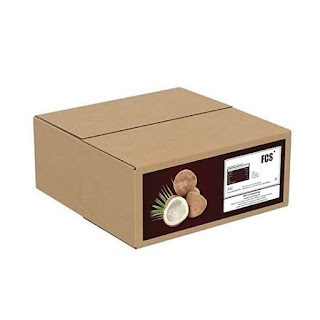How to Store and Preserve Copra Dry Coconut for Long Shelf Life
Copra, or dried coconut meat, is a valuable product used in making coconut oil, animal feed, and various food and beauty products. Due to its high oil content and susceptibility to mold, it's important to store and preserve copra properly to maintain quality and extend shelf life.
Whether you're a farmer, exporter, or small-scale coconut
oil producer, proper storage can prevent spoilage and protect your investment.
In this blog, we’ll explore best
practices to store and preserve copra dry coconut
for maximum freshness and longevity.
1. Drying Properly Before Storage
The first step to long-lasting copra is thorough drying.
Incomplete drying is the most common cause of mold growth and rancidity.
- Moisture
content should be reduced to below 6%.
- Use solar
dryers, hot-air dryers, or smoke kilns to achieve
uniform dryness.
- Ensure
the copra is not exposed to rain or high humidity during or after drying.
Tip: Break one piece open and check if it snaps
easily and feels brittle. If it’s soft, it’s not dry enough.
2. Clean and Grade the Copra
After drying, remove any impurities such as husk fibers,
moldy pieces, or foreign materials.
- Grade
the copra by color and quality. White or light brown copra indicates good
quality.
- Moldy
or blackened pieces should be discarded or used for non-edible purposes.
3. Choose the Right Storage Containers
Use containers that are moisture-proof, rodent-proof,
and allow some ventilation.
Best options:
- Jute
or gunny sacks (lined with plastic for added protection)
- Plastic
or metal drums with tight-fitting lids
- Wooden
crates lined with plastic sheets
Avoid storing in open containers or directly on concrete
floors, which can absorb moisture.
How Long Can You Store Copra?
With proper storage, copra coconut can last 6 to 12 months. However,
factors like humidity, temperature, and cleanliness will affect shelf life.
- Ideal
conditions: Up to 12 months
- Poor
conditions: Spoilage may occur within 2–3 months
Final Thoughts
Storing and preserving copra dry coconut correctly is
essential to protect its quality, prevent waste, and maximize profits. By
ensuring the Ball copra is well-dried, clean, and stored in the right
environment, you can significantly extend its shelf life and maintain its
value.
Whether you’re managing a small farm or a large copra
business, these storage tips will help keep your dried coconut fresh and ready
for use or sale.




Comments
Post a Comment